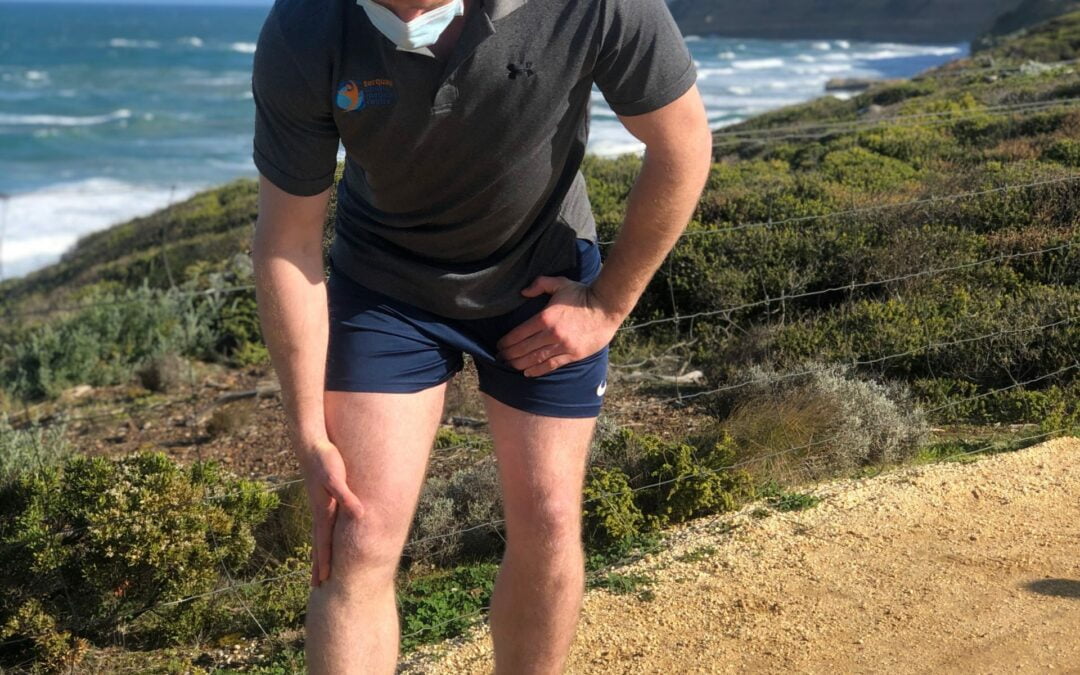My 5 steps to fixing ITB syndrome
You’re out on a run chasing down your next PB when suddenly you feel a sharp pain on the outside of your knee. You pull up, shake it off and start again. But that same pain returns getting worse with each step until you’re eventually forced to slow to a walk.
Does this sound familiar? Your ITB could be your pain point!
ITB syndrome (ITBS) is caused by acute inflammation of the Iliotibial Band which is a thick rope of fascia that extends from your hip down to the side of your knee. Unfortunately, this type of knee pain is all too common in the active population with up to 15% of runners suffering from ITBS at some stage.
ITB syndrome is an overuse injury which typically comes on following a sudden increase in running kilometres. At Torquay Sports Medicine we have seen a spike in patients suffering from ITBS as a result of getting outside and hitting the track during lockdown.
What triggers it?
The Iliotibial band can become inflamed due to a build-up of friction as it slides over the boney parts of our knee with each running step. With long-distance running; the repetitive rubbing of the ITB on the knee joint can lead to sharp pain, particularly when there is insufficient recovery between sessions.
There are several factors that can contribute to the onset of ITB friction syndrome:
- A sudden increase in running distance
- Inadequate recovery periods between running sessions
- Running on uneven surfaces
- Muscular tightness through the glutes, quads and hamstrings causing increased tension through the ITB [2]
- Poor core stability and suboptimal glute activation [2]
- Poor running technique
Here are my 5 steps to get on top of your ITB issues and back on the track, running stronger than ever!
Step 1: Ease off your training load:
You will need to reduce your running activities to allow the inflammation around your knee to settle. The extent of your de-loading will depend on the severity of your ITBS. Some athletes might only need to halve their weekly kilometres for a couple of weeks to fix the issue whereas more serious cases may require avoiding running activities completely for 2-3 weeks. I recommend substituting running for other activities such as swimming during this acute phase so that you don’t lose your aerobic fitness!
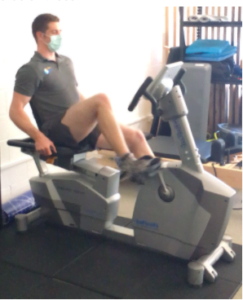
Step 2: Book in to see your health care practitioner:
Your primary healthcare practitioner will be able to give you tailored advice on how to manage your ITBS and get back to running as soon as possible. Hands on treatment such as massage can be very effective in decreasing the tension through the ITB and kickstarting the healing process. I usually recommend using a foam roller and a lacrosse ball at home to release the muscles around your hips and thigh (as shown below). Targeted stretching can also help lengthen the ITB and reduce the friction experienced at the knee joint.
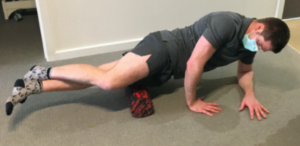
Step 3: Strengthen your legs:
When we run our legs absorb forces of up to eight times our bodyweight with each step. It is therefore vital that runners incorporate a lower limb strengthening program into their training to avoid injuries such as ITBS.
Bolstering the strength in your lower limb can reduce the rubbing of the ITB at the knee joint during running activities and prevent that painful inflammation from occurring. Your health practitioner will be able to set you up with a rehab program that focusses on building strength where you need it most.
Here are some of my favourite rehab exercises to fix ITBS and improve overall running performance!
Clamshell:
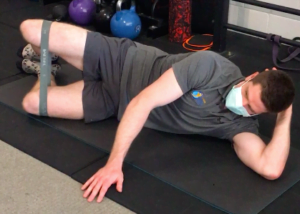
Single Leg Glute Bridge:
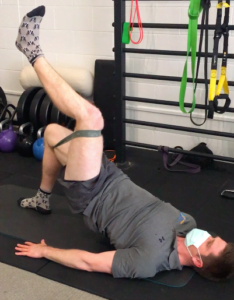
Single Leg Hinge:
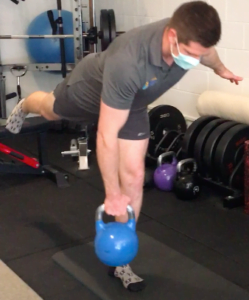
Single Leg Sit-to-stand:
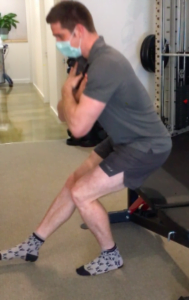
Weighted Step up:
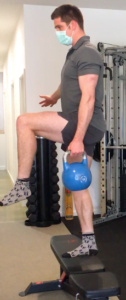
Deadlift:
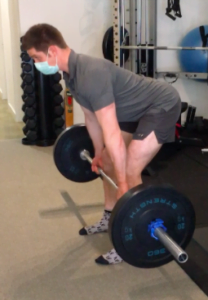
Step 4: Running technique assessment:
Your health practitioner can conduct a thorough assessment of your running technique with the help of a treadmill and a slow-motion camera. We use this footage to highlight any flaws in your movement patterns that could be contributing to your ITBS. Watching yourself run in slow motion is a fascinating experience and I recommend every keen runner to give it a try. Slight adjustments to your form can improve your running efficiency, lower your times and prevent injury. It’s a win-win!
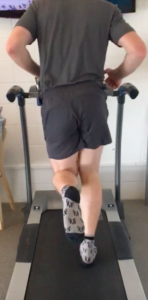
Step 5: Gradually return to normal running load:
It is important to slowly ease back into running activities and your health practitioner will be able to advise you on how to return to the track without re-aggravating your ITBS. My advice would be to start off by jogging some easy laps of the football oval (with plenty of rest in-between each lap) and if then gradually returning to your longer runs, increasing your kilometres bit-by-bit each week. It is important to continue with your recovery strategies and strength program to prevent re-injury and I highly recommend touching base with your health practitioner regularly for treatment and a review of your ongoing running program.
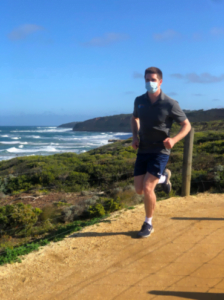
If you have any questions feel free to email me or to book online follow this link. We’re always here to help!
James Breust
Osteopath
References
- Baker RL, Fredericson M. Iliotibial Band Syndrome in Runners : Biomechanical Implications and Exercise Interventions. Physical médicine and réhabilitation clinics of North America, 2016; 27(1):53-77
- Lavine R. Iliotibial band friction syndrome. Current Reviews in Musculoskeletal Medicine, 2010; 3(1-4) :18–22
- Michael D. Clinical Testing for Extra-Articular Lateral Knee Pain: A Modification and Combination of Traditional Tests. North American Journal of Sports Physical Therapy, 2008; 3: 107–109
- Pécina MM, Bojanic I. Overuse injuries of the musculoskeletal system. CRC press, 2004. p 222 – 228
- van der Worp MP, van der Horst N, de Wijer A, Backx FJ, Nijhuis-van der Sanden MW. Iliotibial Band Syndrome in Runners. Sport Medicine, 2012;42(11):969-92.
